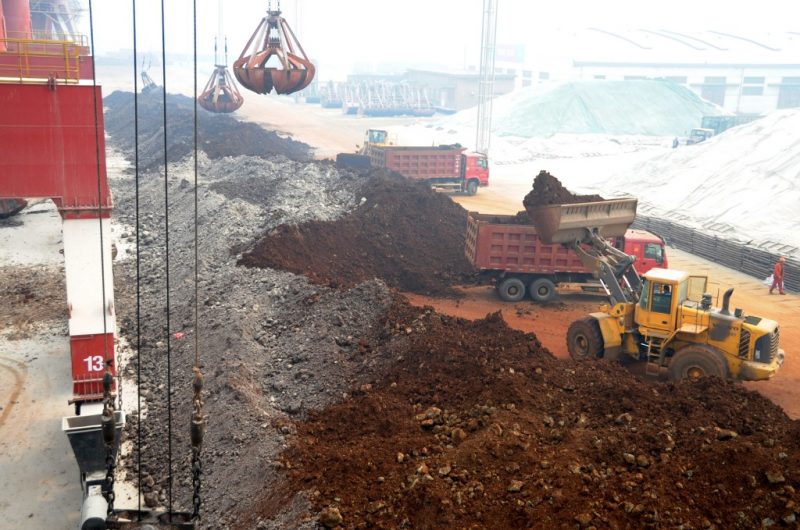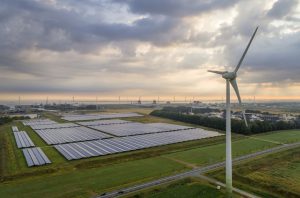China will now require exporters of rare earths to report details of their shipments to the Ministry of Commerce in order to “stabilise the country’s foreign trade,” state media reported on Tuesday.
Exporters will be required to report every shipment along with the “number and time of” bulk rare earths, with immediate effect, state media Global Times reported, citing a circular posted on China’s Ministry of Commerce (MOFCOM) website on Tuesday.
This is the first time China has added rare earths to its list of minerals that need to be reported to authorities for export, the report posted on the website of state news agency ECNS said.
Also on AF: China Turns Focus on Rare Earths Sector Amid Trade War
The Commerce ministry also tasked its trade chambers to analyse the data, a move that is “in line with common international practice”, according to its circular.
The move is intended to allow “precise understanding of the status quo and trend” of China’s rare earths trade, the report quoted the circular as saying. It will “guide traders to conduct foreign trade in an orderly fashion so as to avoid risks and ensure stable foreign trade”, it added.
China is the world’s largest supplier of rare earths and accounted for 70% of global mine production of rare earths in 2022 according to United States Geological Survey (USGS) data.
A group of 17 hard-to-mine minerals, rare earths are necessary for the production of technologies and equipment key to today’s global economies — be it lasers and military equipment, magnets in electric vehicles, wind turbines, or even consumer electronics such as iPhones.
Current trade at ‘cabbage prices’
Wang Guoqing, research director at Beijing Lange Steel Information Research Center, told the Global Times that currently in China “some rare-earth minerals have been traded for ‘cabbage prices’.”
“The new move will provide comprehensive export data about rare earth, including volume and price, so as to ensure the healthy and stable the development of the valuable resources in the digital era.”
China’s plans to scrutinise rare earth trade comes amid increasing trade tensions with the West. The European Union is currently investigating a host of Chinese state subsidies, including those for steel and aluminium makers, electric-vehicle makers and wind-turbine makers.
Beijing is also looking to push back against US President Joe Biden’s efforts to restrict the progress of advanced technologies like artificial intelligence and quantum computing in the world’s second-largest economy.
In July, China announced restrictions on exports of two key chipmaking metals — gallium and germanium. The move was widely seen as a tit-for-tat move against a US clamp down on exports of advanced chips to China.
Trade data for August and September showed Beijing has now completely clamped down on exports of the two metals.
Last month, China also announced restrictions on exports of graphite — a key electric vehicle battery metal. They are set to go into effect from December.
View this post on Instagram
China’s price advantage
Rare earths have also emerged as crucial to the global clean energy transition. That has increased the world’s dependence on China for their rare earth supply.
Customs data on Tuesday showed China’s exports of rare earths grew another 9% in October, despite global efforts to ‘de-risk’ from the world’s second-largest economy.
A key reason for China’s dominance in these metals is the production process can be a “finicky” and environmentally toxic process with many complex steps.
“China made a strategic decision decades ago to develop its rare earth processing capability, despite the environmental consequences of the available technology,” Melissa Sanderson, president of American Rare Earths told Reuters earlier this year.
China’s refining expertise has allowed the country to engineer rare earths prices at different stages in the processing chains to its advantage, including low prices for finished products, to inhibit foreign competition, analysts said.
“What’s happened in China over many years is that they’ve invested heavily and cleverly in the processing capacity to convert the (rare earths) material all the way from the mine through to the magnet,” Allan Walton, a metallurgy professor at the University of Birmingham, said.
A major challenge before China now is the falling prices of rare earths — which touched a three-year low this year, in part due to rising Chinese supply.
- Vishakha Saxena, with Reuters
Also read:
China Metal Curbs, Rare Earths Risks Fuel Hunt For Safe Sources
China’s Gallium Curbs a Headache for EV Carmakers
Curbs on Chipmaking Metals ‘Just The Beginning’, China Warns
Western Firms Struggling to Break China’s Grip on Rare Earths
The Transition to Clean Energy is Unstoppable, IEA Says
Vietnam to Restart Giant Rare Earths Mine in Bid to Rival China
US Checking EV Battery Imports Over China Forced Labour Fears
China’s Overseas Metals, Mining Deals Set For Record Year – FT
China Leads Rare Metals Mining Race to Ocean Floor – WP
























